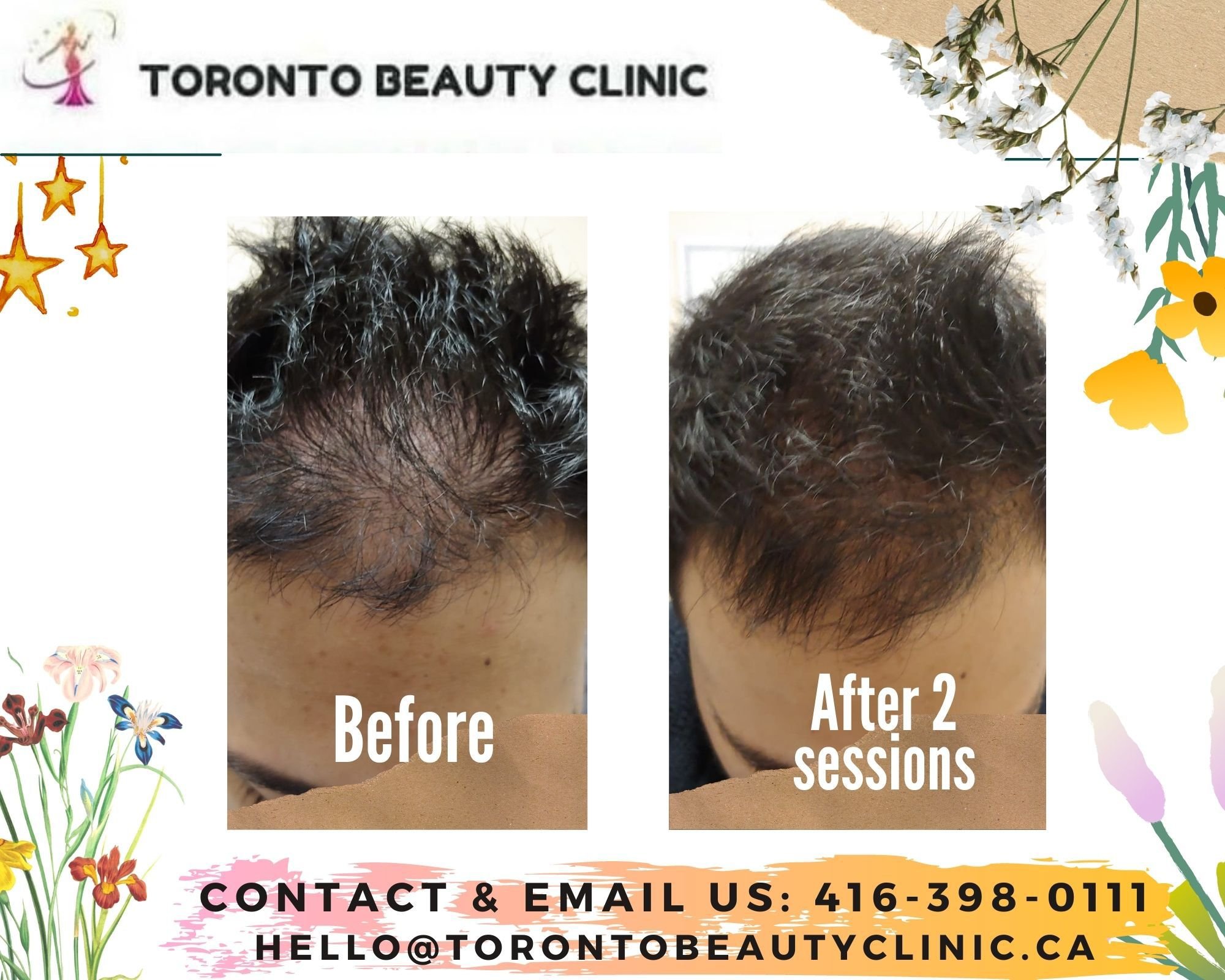
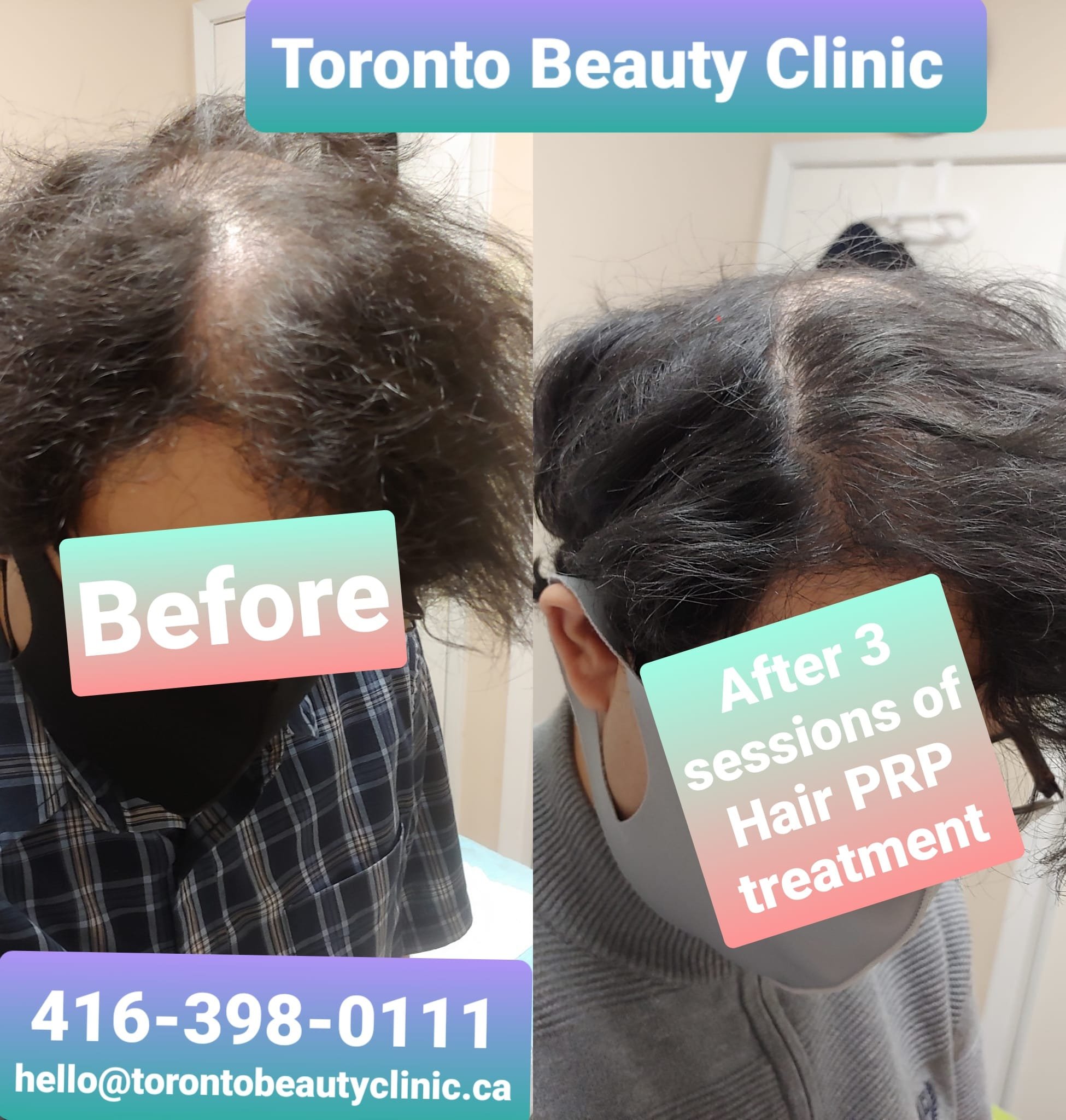
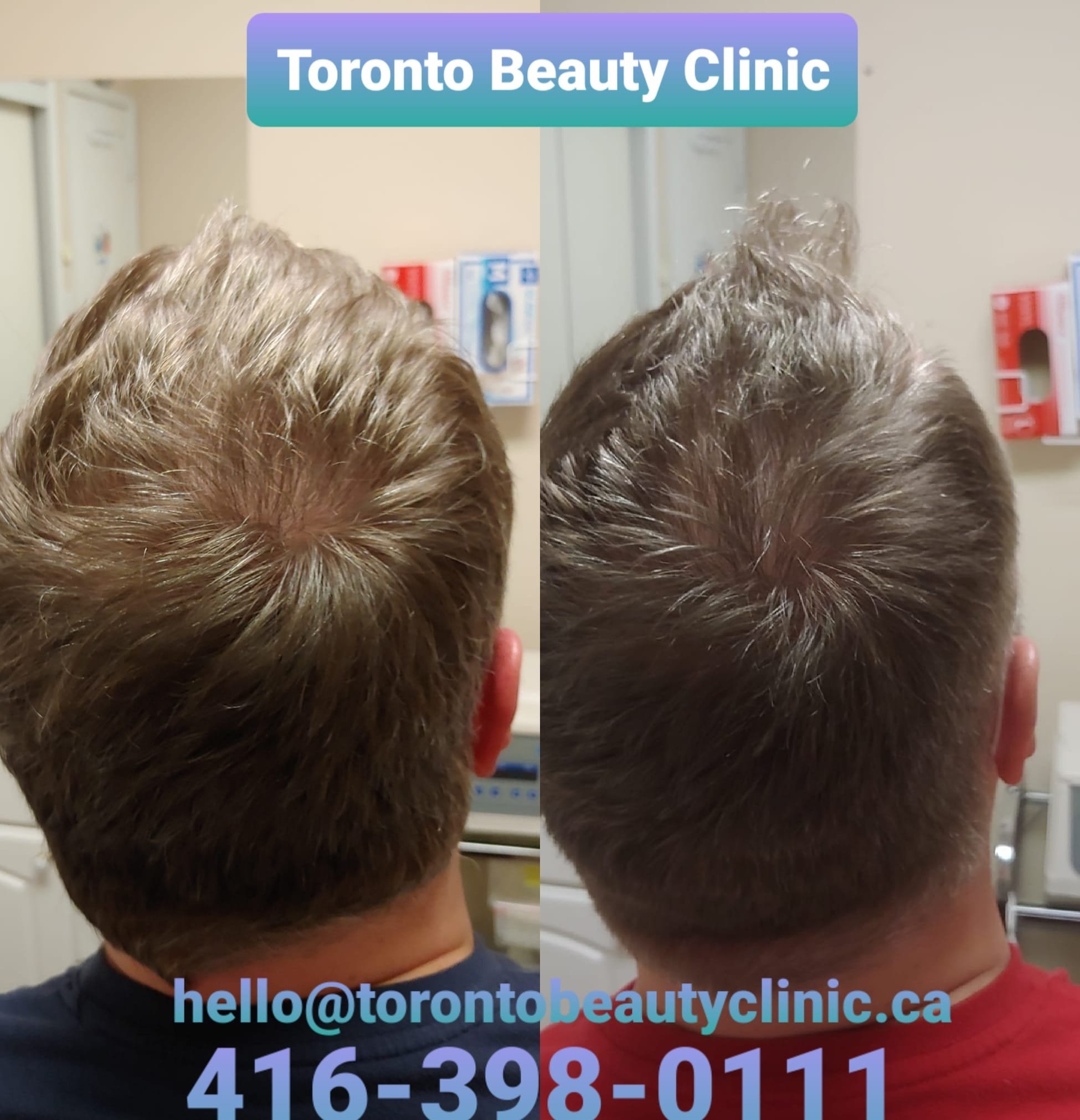
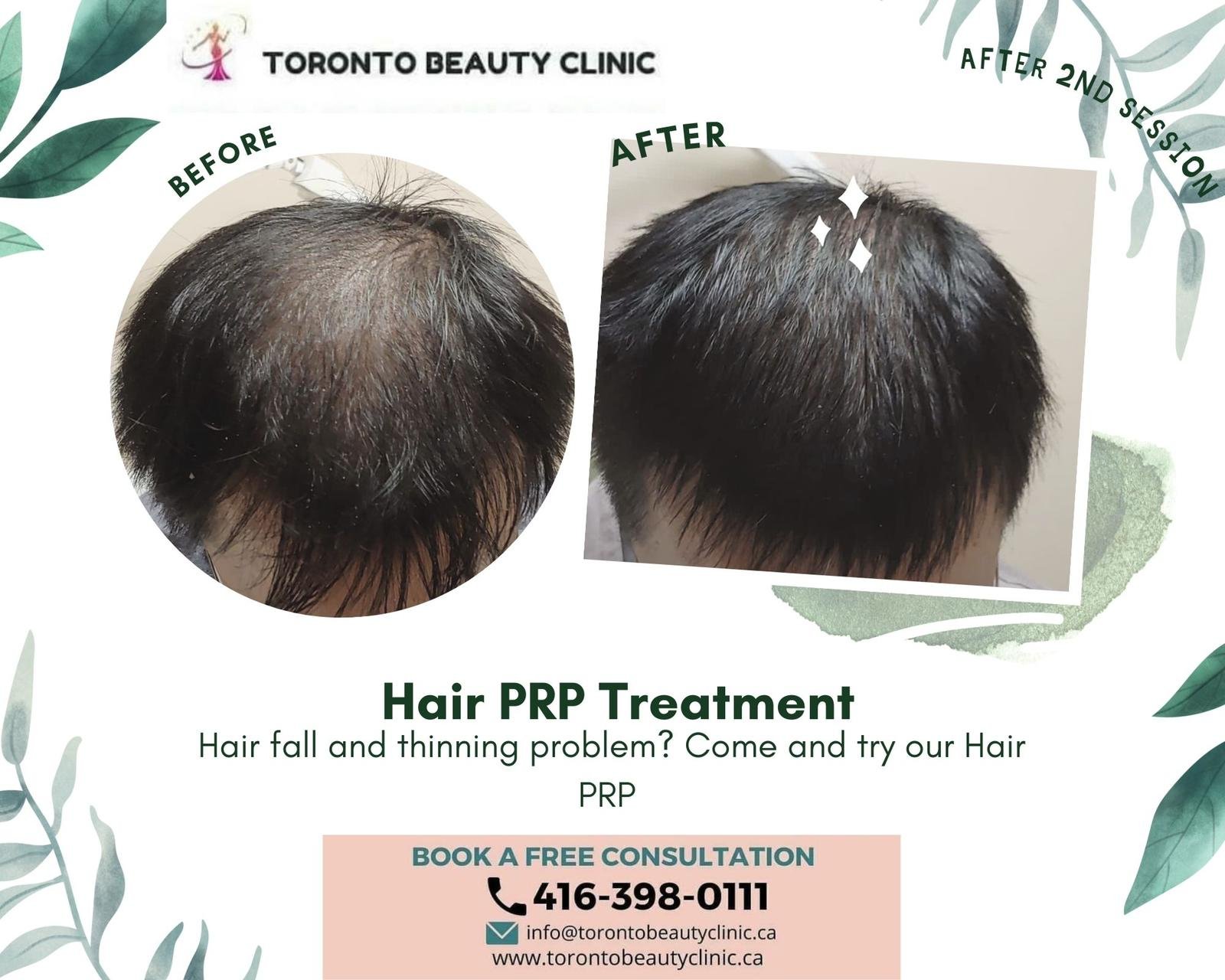
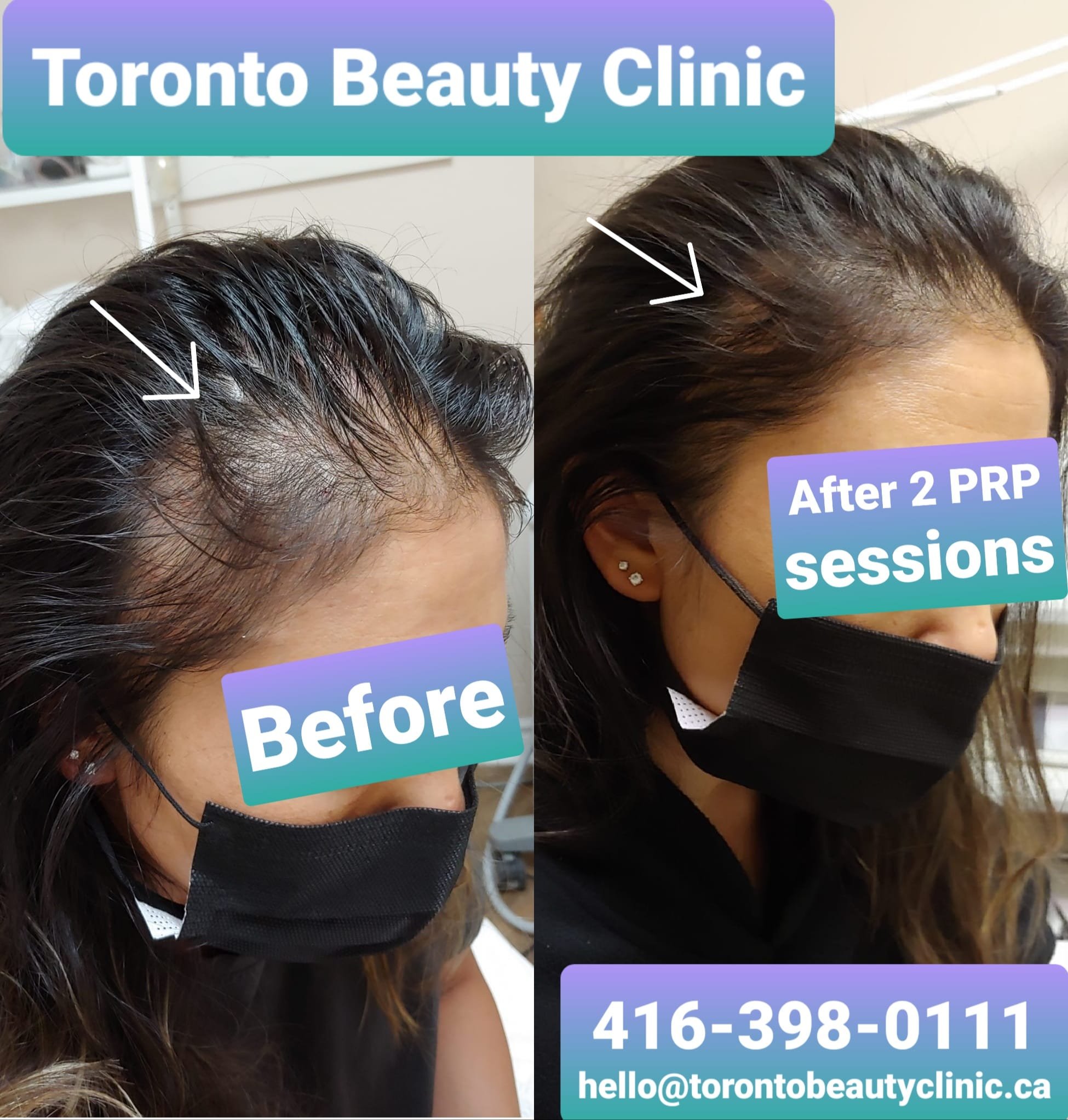
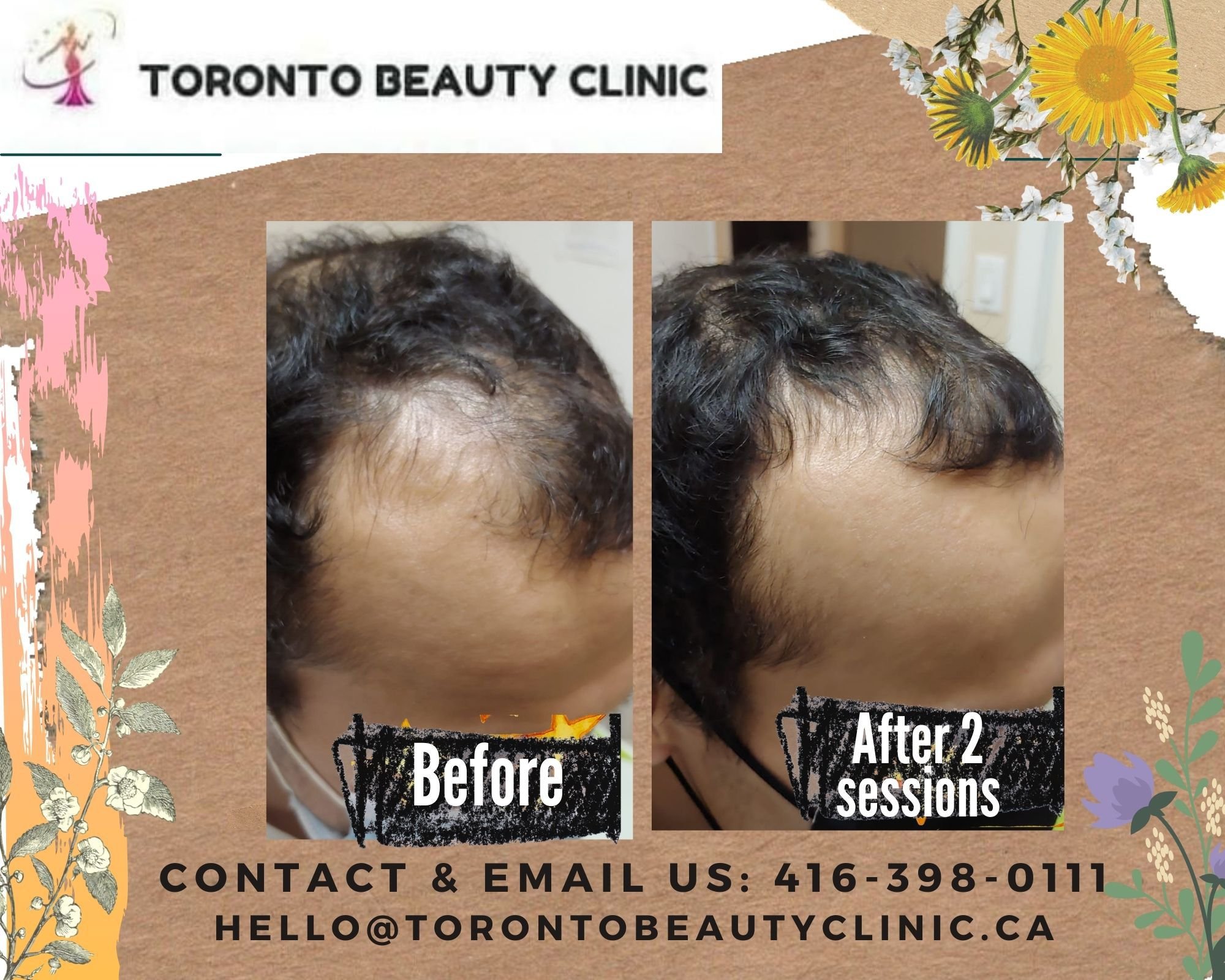
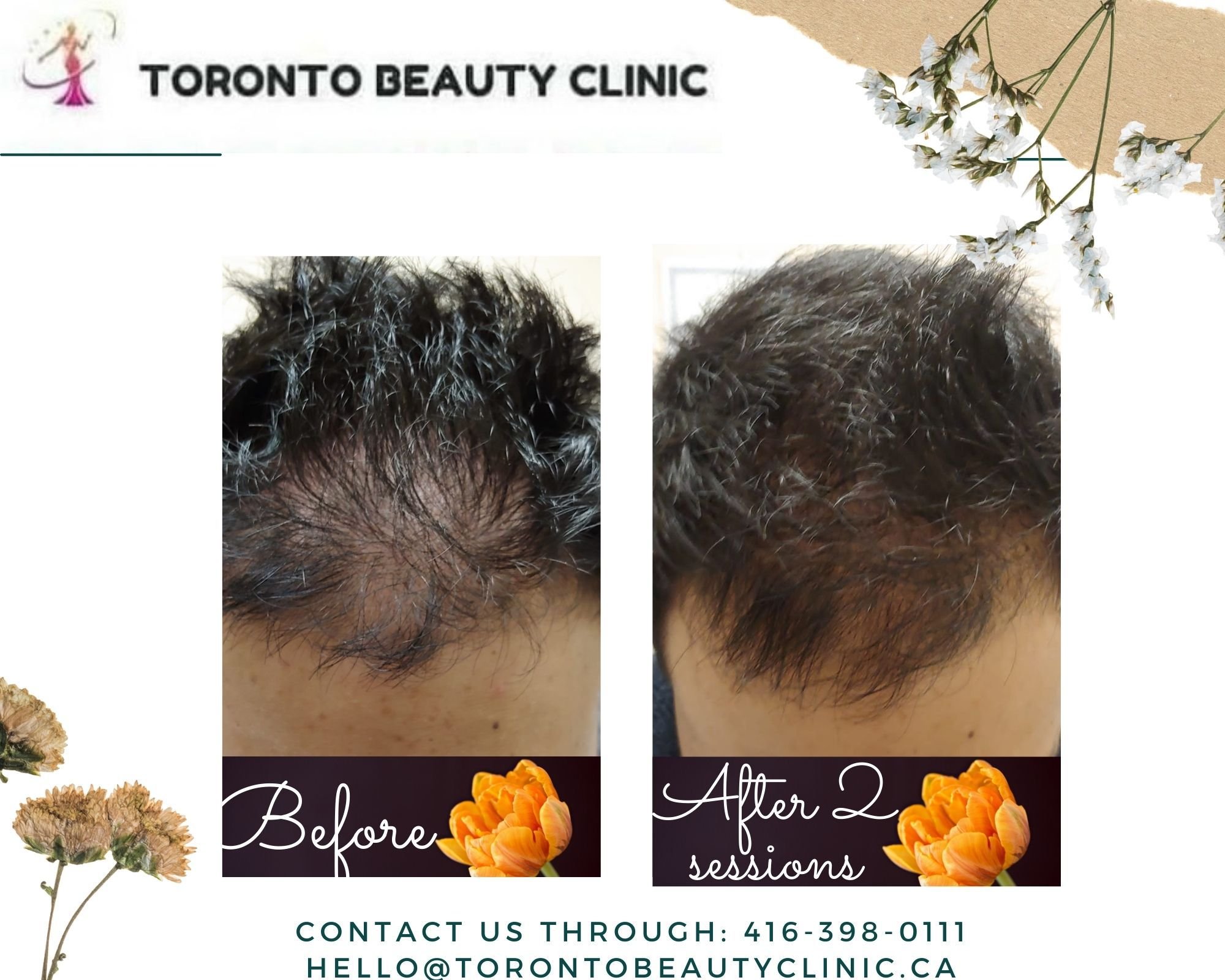
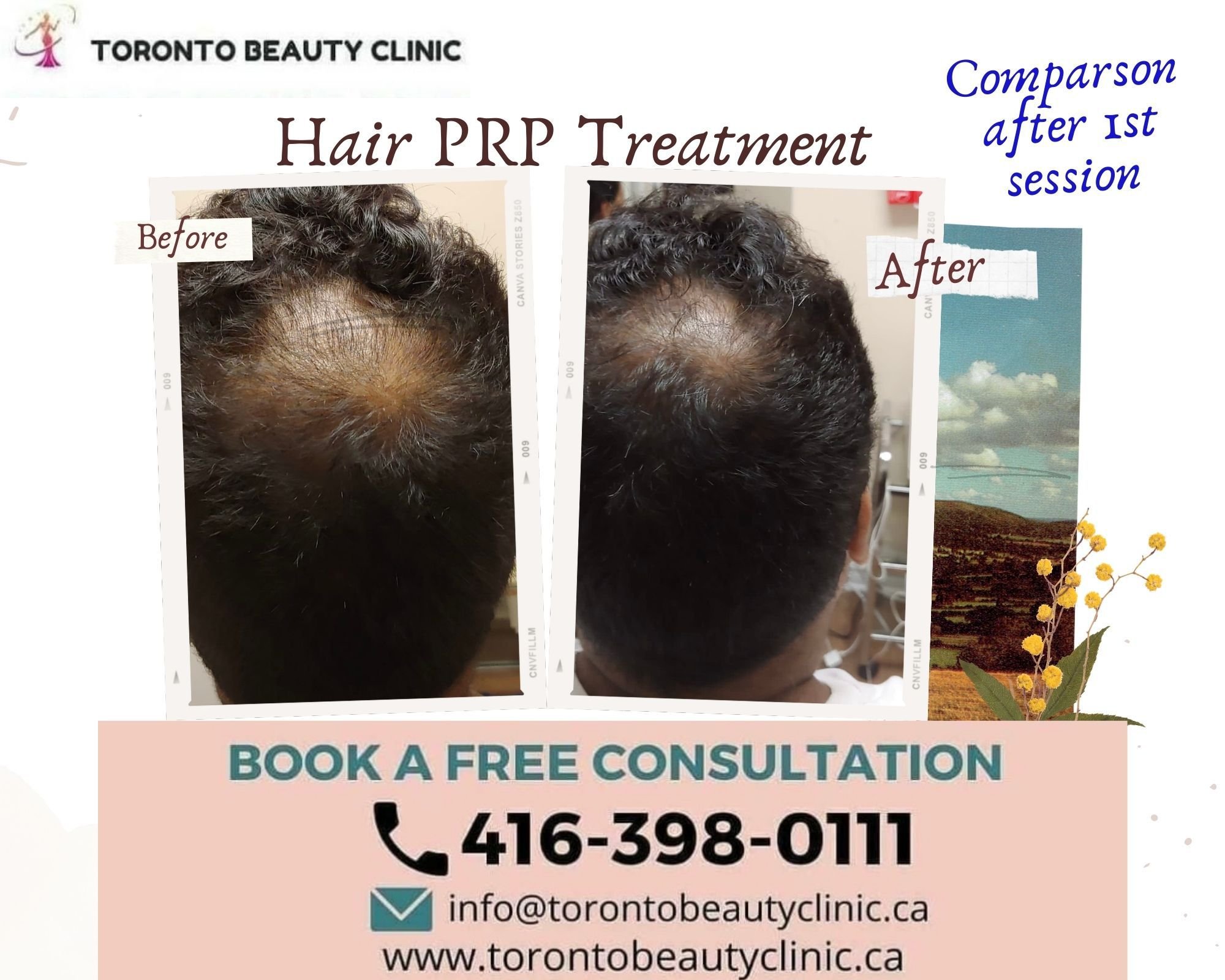
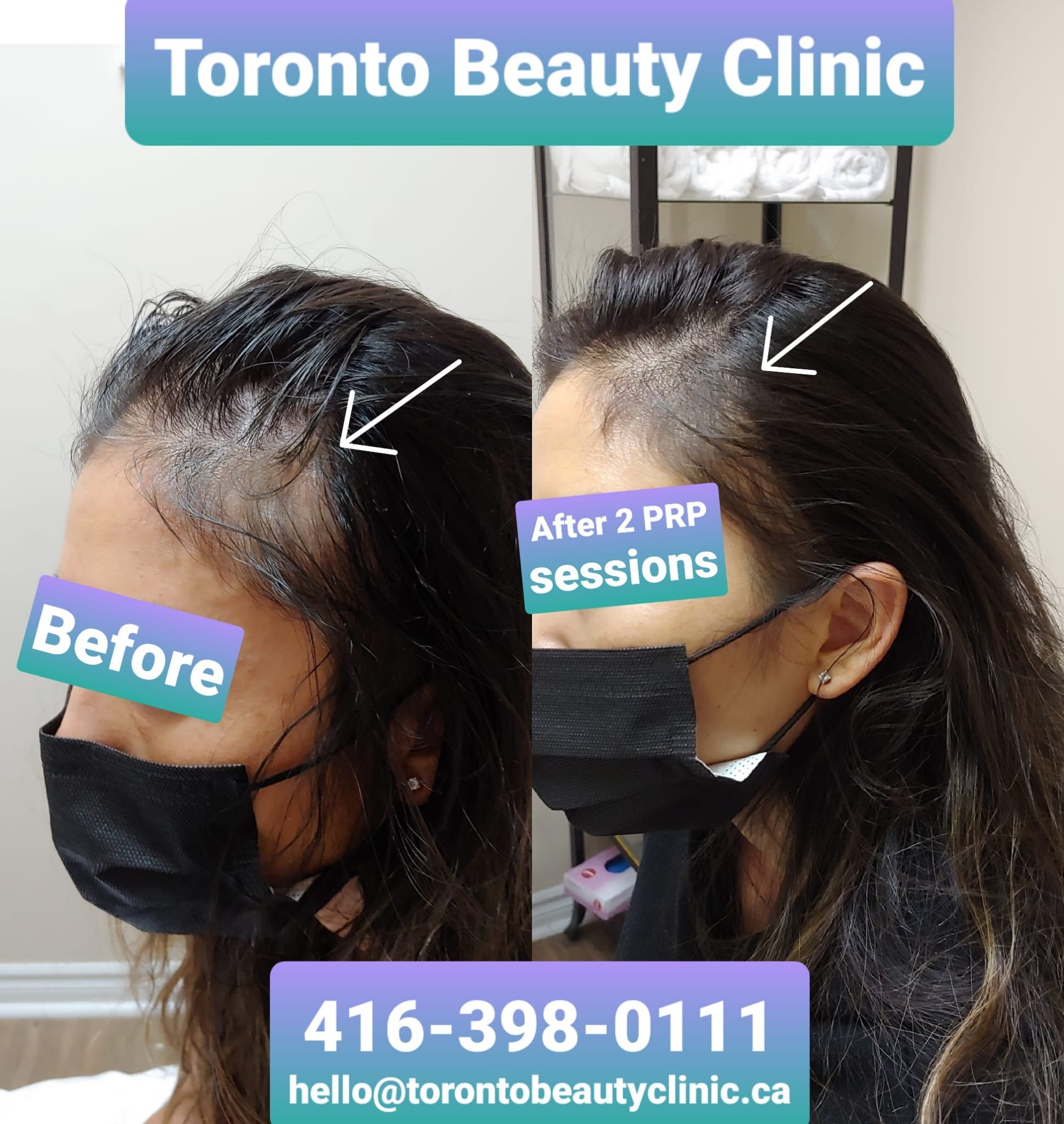
HAIR LOSS TREATMENTS
STARTING TO LOSE YOUR HAIR…?
“Lately, I am noticing more scalp shining through…”
“I’m finding a lot of hair on my pillow…”
“I’m seeing my hairline recede slightly…”
“I’m seeing more hair than usual in the drain…”
For many of our patients—and, tens of millions of men and women—these signs are typically the first indicators of hair loss. It may surprise you to learn how frequently we also hear patients tell us, “I woke up one day with less hair,” “It just happened suddenly,” or “I saw myself with hair loss in a photo or video and I was shocked!”
In other cases, patients may observe a slow, but progressive thinning or receding of the hairline. Initially, they want to believe that the loss is not significant. Then, seemingly “overnight,” the amount of hair lost is too obvious to deny anymore. For others, initial changes in their hair volume and density are actually so gradual, that they may only be detectable with the help of a microscope or scientific tool like a HairCheck trichometer. For these patients, their hair loss appears to be quite sudden because it does not become noticeable to the eye until the hair density dips below a definite threshold. For other patients, it might have been a photo, video or a mirror that showed the results of a progressive hair loss that they didn’t realize was occurring.
Understanding Your Hair Loss
Before we elaborate on the types and causes of hair loss, it is beneficial to review basic information about how hair grows. The hair follicle, which appears as a tiny opening in the skin, is the base from which each hair grows. Each hair’s root resides within the follicle where it receives nourishment from the body’s blood supply. The hair follicle which produces the hair is an incredibly tiny, yet complicated micro-organ in the skin. It is connected to our blood circulation and nerves as well as oil (sebaceous) glands. Each follicle is also connected to a small muscle (that causes your hair to stand up on the back of your neck or your arm!) Hair follicles communicate within themselves and with other nearby follicles with small protein molecules and are also responsive to changes in your body’s hormones, stress level, medications you may take, food you may eat and many other influences.
Hair Growth Cycles
Every hair follicle produces hair in a three-stage cycle that repeats over time. The first stage of this cycle is active growth, known as the ANAGEN phase. The intermediate stage is the CATAGEN phase. And, the third stage is the resting TELOGEN phase. Each hair follicle continually undergoes and repeats the cycle of hair growth, independently. And, at any given point in time, most of the hair on your head, is in the active growing Anagen phase, which lasts on average from two to six years. While the active stage of hair growth is the longest in duration, the Catagen intermediate phase is the shortest, lasting approximately two to three weeks. Finally, it is during the resting third of the cycle, the Telogen phase when a new Anagen hair pushes out the hair currently in the follicle. This phase typically has a duration of three to four months. It is the Telogen hairs that you see when they come off into your brush or comb.
The Impact of Changing Hair Growth Cycles
When an average, healthy individual reaches physical maturity, at or around the end of adolescence, he or she will have between 100,000 to 150,000 hairs on the head. Under normal conditions, the average person will “lose” or shed approximately 100 Telogen hairs per day and grow 100 Anagen hairs per day. Baldness or hair thinning occurs as the normal growth stage slows. As most individuals get older, the percentage of hairs in the resting stage (Telogen phase) increases, while less hair remains in the active growth Anagen phase. Hair follicles may also produce a thinner, less pigmented hair over time.
A Crash Course in the Role of Genetics and Hormones in Hair Loss
For many years, researchers told us that hair loss resulted from the genetics inherited from the mother’s side of the family. Now, advances in medical science offer proof that “baldness” genes do not discriminate by the sex of the parent. In fact, the related genes can be passed down from both sides of the family tree. We also know that this inherited trait can appear to skip generations and even affect siblings differently. There are over 200 genes that regulate hair characteristics, including the onset and speed of hair thinning and baldness.
Male Pattern Hair Loss
For men, male pattern baldness is the most common form of hair loss. It is characterized by thinning hair beginning at the temples and the crown of the head. Over time, the hair at the temples continues to recede, leaving a central patch of hair at the front of the hairline and a growing bald spot at the crown. Eventually, as the hair loss in these areas widens, the baldness at the front and crown meet to form one large bald spot. Depending on the rate of progression of the hair loss, all that remains is a ‘border’ of hair around the side and back of the head. Male pattern hair loss is a concern for many men because as the hairline recedes, the face takes on a more aged appearance. Hair loss is seen by many as an unwanted sign of ‘premature’ aging.
Male Pattern Hair Loss is “Chronic” and “Progressive:” It is well documented that men who are prone to male pattern hair loss will continue to lose more hair if the condition is not treated.
Norwood Classification Chart – Male Pattern Hair Loss
In men, it has been determined that Dihydrotestosterone (DHT), a breakdown product of the male hormone Testosterone, is the ‘trigger’ that causes the progressive miniaturization of hair follicles. If you are genetically susceptible to male pattern hair loss, DHT works to progressively miniaturize follicles (which then grow a shorter, thinner, less pigmented hair) until they finally die. Certain prescription medications, like Propecia/finasteride, work to prevent and reverse the miniaturization of hair follicles by blocking the conversion of Testosterone into DHT. Finasteride often is considered the ‘cornerstone’ of medical therapy because it is safe and effective for the treatment of male pattern hair loss. Rigorous scientific data reveals that if a man takes finasteride for five years, he has a 90% chance of looking the same or better than he did when he started the medication. The same studies showed that 75% of men with untreated male pattern hair loss looked “much worse” at the end of the same five years. Treatment of male pattern hair loss should always include a long term ‘hair loss prevention’ therapy, like Finasteride. Other therapies may include prescription topical minoxidil, laser therapy, PRP, nutritional supplementation and/or hair transplantation.
Female Pattern Hair Loss
If you are a woman experiencing shedding or thinning hair, you are in the company of an estimated 20 million American women who also suffer from hair loss. Unfortunately, many women mistakenly believe they are the only female with this condition because it is a common misconception that hair loss is something that only happens to men.
Ludwig Scale
Savin Scale
Savin Scale for Hair Loss in Women
While women typically experience a somewhat different hair loss pattern than men, the onset of hair loss in both sexes can occur anytime after the teenage years. Because of the effect of hormones, for some women, hair loss can become more evident:
When starting birth control
After the birth of a child
Around menopause
When starting hormone replacement therapy
After a total hysterectomy
While female hair loss can present in many ways, the most common types of hair loss in women are:
Diffuse hair loss, in which hair loss is evident all over the top or crown of the scalp, resulting in decreased hair density, coverage and volume
A slight recession of the hairline, and/or
Loss of density and coverage at the frontal half of the scalp–starting just behind the hairline and extending toward the crown.
In most cases, unlike male pattern baldness, hereditary hair loss in females does not typically result in a total balding of the affected area.
Concerns that can be treated with PRP
Androgenic alopecia.
Female diffuse pattern alopecia.
Telogen effluvium.
Alopecia in systemic diseases.
Alopecia caused by medication.
Hereditary syndromes.
Patients who want to increase the speed of hair growth.
Men and women with excessive hair loss.
Patients with very thin and weak hair.
Patients who undergo a hair transplant, to improve the survival rate of the graft.
Patients of any age with hair loss or hair growth problems.
Hair recovery after chemotherapy.
Hair Restoration Options
Once you understand the cause of your hair loss, you need to determine the best way to stop losing more hair, enhance the hair you have and restore the hair you’ve lost. For the most patients, this means using a combination, or ‘multi-therapy,’ approach: non-invasive treatments to protect the hair you have and hair transplantation to restore the hair you’ve lost. Some patients might accomplish their goals using ONLY non-invasive treatments.
Getting Started: What You Can Do Now
The sooner we treat your hair thinning and loss, the more hair we can save. Get ready to put an end to your hair loss—and get back what’s been lost
PRP
PRP or Platelet Rich Plasma hair restoration procedure is considered as a great break through in hair growth therapy. There are large number of successful cases out there such as film stars, actors, spokespersons and businessmen, who have achieved very effective results.
The treatment involves drawing the patient’s blood and spinning it in a centrifuge to separate the plasma from the red and white cells. The platelets and growth factors are collected from the sample and injected into the scalp where the hair is thinning. injection of blood plasma rich in platelets will stimulate hair follicles and make hair grow, even in genetic bald spots. It decreases the hair fall, improves the quality of hair and causes thickening of fine miniaturized hair.
CARBOXY THERAPY
Carboxytherapy is a non-surgical cosmetic medicine treatment. Carboxytherapy employs injections to infuse gaseous carbon dioxide below the skin into the subcutaneous tissue through a needle. It improves circulation at the injection site by forcing red bloods cells to release oxygen and pick up C02 to be eliminated by the body. This process of oxygenating the area causes angiogenesis of blood vessels in the area by nourishing the hair follicle much like laser hair rejuvenation. For Carboxytherapy hair rejuvenation, the injection of C02 has a vasodilation effect (opening up of tiny blood vessels) which allows for the increased nourishment of vitamins and nutrients to the scalp for increased hair growth and stabilization of hair loss. It is a great natural hair loss treatment and works wonders in combination with Platelet Rich Plasma(PRP) and Mesotherapy for hair loss.
MESOTHERAPY
Mesotherapy is a non-surgical cosmetic medical treatment. Medication is administered subcutaneously with special disposable micro needles. Micro-drops of the drug are slowly absorbed into the blood flow.
People who perform mesotherapy for hair loss claim it:
corrects hormone imbalances in and around the hair follicle
delivers nutrients to the hair
improves blood circulation




